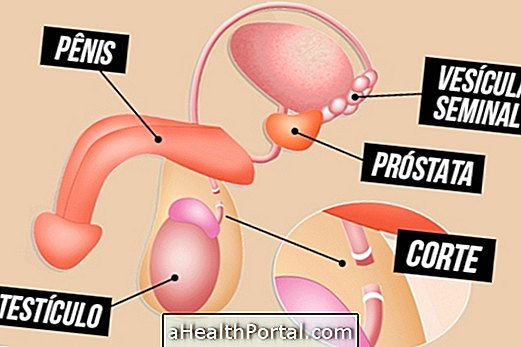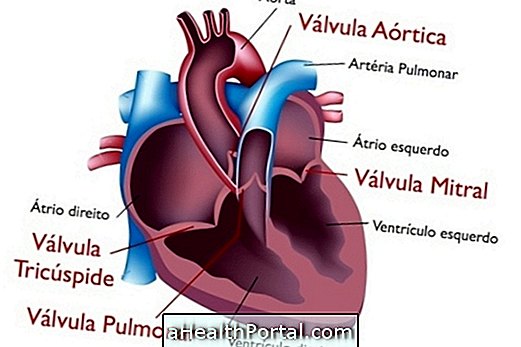Gender dysphoria consists of a disconnect between the sex with which the person is born and their gender identity, that is, the person who is born with a male gender, but has an inner feeling as a female and vice versa. In addition, the person with gender dysphoria may also feel that he or she is neither male nor female, that it is a combination of the two, or that their gender identity changes.
Thus, people with gender dysphoria feel trapped in a body they do not consider to be their own, manifesting feelings of anguish, suffering, anxiety, irritability, or even depression.
The treatment consists of performing psychotherapy, hormonal therapy, and in more extreme cases, surgery for sex change.

What are the symptoms
Gender dysphoria usually develops around age 2, however, some people may only recognize feelings of gender dysphoria when they reach adulthood.
1. Symptoms in children
Children with gender dysphoria generally have the following symptoms:
- They want to wear clothes made for children of the opposite sex;
- Teimam belong to the opposite sex;
- Pretend they are of the opposite sex in various situations;
- They like to play with toys and games associated with the other sex;
- They show negative feelings about their genitals;
- They avoid joking with other children of their own sex;
- Prefer to have playmates of the opposite sex;
In addition, children may also avoid joking characteristics of the opposite sex, or in case the child is female, she may come to urinate standing or sitting in bed if she is a boy.
2. Symptoms in adults
Some people with gender dysphoria only recognize this problem when they are adults, and may start with women's clothing, and only then realize that they have gender dystrophy, but should not be confused with transvestism. In cross-dressing, men usually experience sexual arousal by wearing clothes of the opposite sex, which does not imply that they have an inner feeling of belonging to that sex.
In addition, some people with gender dysphoria may marry, or engage in some activity characteristic of their own sex, to mask such feelings and deny feelings of wanting to belong to another sex.
People who only recognize gender dysphoria in adulthood may also develop symptoms of depression and suicidal behavior, and anxiety for fear of not being accepted by family and friends.

How is the diagnosis made?
When this problem is suspected, one should go to a psychologist to make a symptom-based assessment, which usually only takes place at 6 years of age.
The diagnosis is confirmed in cases where people have felt for 6 months or more that their sex organs are not compatible with their gender identity, having an aversion to their anatomy, feeling extreme anguish, losing the will and motivation to perform the tasks of the day, feeling desire to get rid of the sexual characteristics that begin to appear in puberty and believing to be of the opposite sex.
What to do to deal with dysphoria
Adults with gender dysphoria who do not have feelings of distress and who manage to make their daily lives without suffering usually do not need treatment. However, if this problem causes much suffering in the person, there are various forms of treatment such as psychotherapy or hormone therapy, and in more serious cases, surgery for sex change, which is irreversible.
1. Psychotherapy
Psychotherapy consists of a series of sessions, accompanied by a psychologist or psychiatrist, in which the aim is not to change one's feelings about one's gender identity, but rather to deal with the suffering caused by the anguish of feeling in a body that is not yours or of not feeling accepted by society.
2. Hormone Therapy
Hormone therapy consists of remedy-based therapy containing hormones that alter secondary sexual characteristics. In men, the remedy used is a female hormone, estrogen, which causes breast growth, decrease in size of the penis and inability to maintain an erection.
In the case of women, the hormone used is testosterone, which causes the growth of more body hair, including the beard, alteration of fat distribution in the body, voice alteration, which is more severe and changes in body odor.

3. Gender Change Surgery
The gender-change surgery is done with the purpose of adapting the physical characteristics and the genital organs of the person with gender dysphoria, so that the person can have the body with which he feels comfortable. This surgery can be performed in both sexes, and consists of the construction of a new genitalia and the removal of other organs.
In addition to surgery, hormonal treatment and psychological counseling should also be done in advance, in order to confirm that the new physical identity is appropriate for the person. Learn how and where this surgery is done.
Transsexuality is the most extreme form of gender dysphoria, most biologically male, which identifies with the female sex, which develop feelings of disgust with regard to their sexual organs.



























